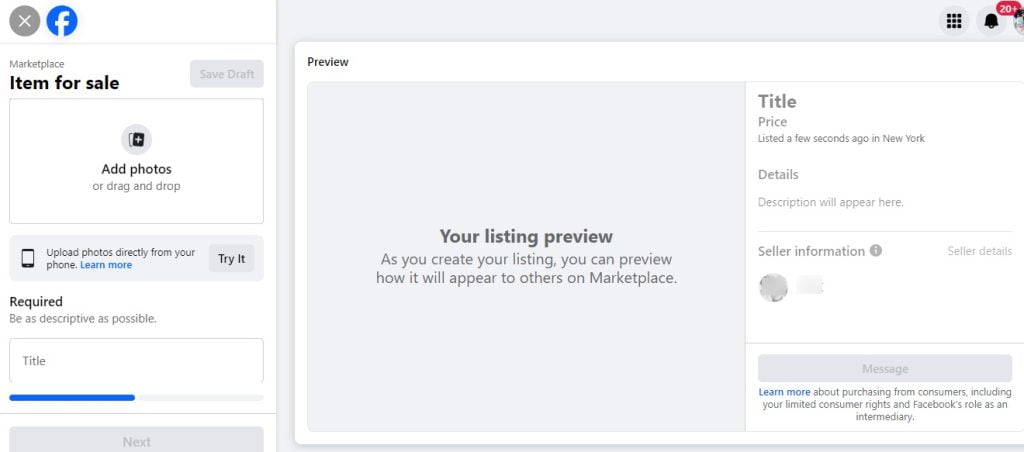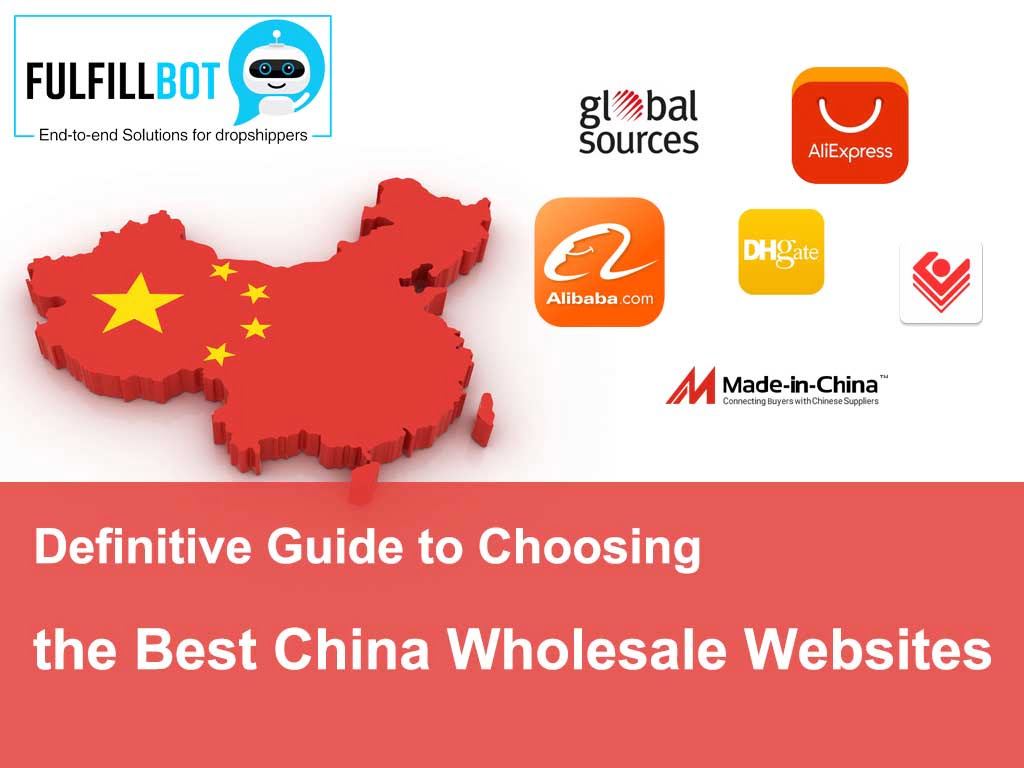Facebook is an old social media platform with billions of users. It is excellent for keeping up with old friends. However, it also serves as a platform where sellers and buyers meet.
The Facebook marketplace took its first steps in 2016. It is a lucrative business space since Facebook has millions of active users. Plus, it is convenient and easy to start.
However, like most e-commerce platforms, selling products on Facebook comes with fees. Knowing these fees is critical to setting a reasonable profit margin.
You can incorporate them into your expenses. Also, the information helps you make informed decisions as a buyer. Here, we explore the deep ends of the Facebook marketplace and chip in tips that might help.

FB Marketplace – What Is It?
Before we discuss the different fees to expect on Facebook Marketplace, what is this site? Facebook Marketplace is where users can meet to buy and sell products.
Since there are no restrictions, the product range is vast. Users can buy or sell anything, from consumer electronics to clothes. Also, these items can be new or used. The platform launched to be a viable alternative to eBay and Craigslist.
Every Facebook user has access to the marketplace. Plus, it is pretty straightforward to get started. On your account, locate the Marketplace option on the left-hand sidebar if you use a laptop.
For mobile users, you will find the option under the hamburger menu. You can also enter facebook.com/marketplace into your browser.
For sellers, this platform offers a variety of e-commerce features, including:
Listing Creation: You can upload a listing when you want to sell on Facebook. They typically contain pictures, photos, pricing, and descriptions.
Payment Processor: Facebook Marketplace has its payment processor, Facebook Pay. It is currently the only one. It is safe and doesn’t incur any charges.
Ad Creations: Facebook Marketplace offers several advertising tools. You can leverage them to improve your selling potential. Plus, starting an ad campaign is pretty simple.
Reviews and Ratings: Marketplace features reviews and ratings on listings. It enables users to make wise decisions about their purchases. This feature supports a cross-feedback system where buyers and sellers can leave reviews.
How Does Facebook Marketplace Work?
We know that Facebook Marketplace is a simple e-commerce platform, but how does it work? It works like any other online selling platform but with more pressure on the seller.
Sellers have to keep a close eye on the listing and shipping. This way, you are readily available to reply to interested buyers. While these are salient points, here is how the platform runs:
First, you have to create a listing. This step includes a couple of options. You can either list for a single product or launch many listings simultaneously. To kickstart this process, go to the marketplace and click the Create new listing button. You can upload your documents or a spreadsheet if you choose multiple listings.
When uploading a listing, here are the fields you have to fill:

Title: This is a required field; you must enter a title with 150 characters.
Price: Enter the value of the product (in number)
Condition of the product: Enter the state of the product. Is it New, Used-new, Used-good, or Used-fair?
Category: This field is optional, highlighting the type of listing.
Description: This field is not compulsory, but you can discuss the product in this space.
You can also pick the delivery method you prefer. Furthermore, note that not all products are eligible for shipping. You will find more information about these products while creating your listing.
Plus, note the listing only extends 1 to 500 miles from your location. Hence, your listing has no global reach, but it is okay since you save up on shipping fees.
What Are Different Facebook Marketplace Charges?
Listing your goods for sale on Facebook Marketplace is free. However, sellers may encounter certain charges depending on the type of transaction.
1) Seller Fees
Facebook has several fees for individuals who use its services. First, we will start with the selling fee. This fee applies to users who hope to make a sale. For most categories, there’s a selling fee of 5% per shipment. The cost is deducted from the sales price, including shipping and taxes.
For shipments under $8, a flat fee of $0.40 applies instead. For items above $8, you pay the expected 5%. Hence, for a product of $20, you will be paying $1. These fees cover payment processing and help maintain the platform.
Not all items incur fees; local sales often do not. This fee only applies to items that are shipped. Understanding these fees helps sellers price items effectively. This way, there is transparency and fair transactions on the platform.
Listing Fees
The listing fee is what you pay to list your products. These fees accrue when you list your product on the platform. However, this fee is not unique to the FB marketplace. Several e-commerce platforms also have this sort of fee.
This kind of fee can deter small businesses from listing on the platform. One of the platforms is Etsy. The selling platform charges $0.2 for each listing. Facebook Marketplace doesn’t have listing fees. Sellers can list their products as they will and won’t come with fees.
Subscription Fees
Subscription fees are a staple among e-commerce platforms. The sellers must pay these fees upfront before accessing the platform’s services.
They are usually monthly. However, subscription fees don’t exist in Facebook Marketplace. Sellers can upload their listings how they like. You don’t have to commit via subscription fees.
2) Buyer Fees
Typically, buyers on Facebook Marketplace do not pay extra fees. The platform is designed to keep costs low for buyers. However, some exceptions exist, such as expedited shipping fees. Buyers may also incur fees if using third-party payment services.
The lack of buyer fees makes Marketplace attractive. It encourages more users to engage and buy items. This fee structure supports a vibrant and active marketplace. You can join, browse the available listings, and choose your preferred option.
3) Payment Processing Fees
Facebook Marketplace uses Facebook Pay for transactions. Payment processing fees are included in the seller’s cost. This integration simplifies transactions and maintains security. Sellers receive payouts to their linked bank accounts.
The system supports various payment methods, enhancing user convenience. Secure and efficient payments are a priority for Facebook. It helps build faith between buyers and sellers on the platform.
4) Shipping Fees
Shipping fees on Facebook Marketplace vary based on the item and distance. Typically, the buyer pays for shipping unless otherwise agreed. Sellers can offer free shipping as a sales incentive. The marketplace needs a fulfillment center.
The responsibility for shipping lies with the seller. The platform provides estimated shipping costs during listing creation. These estimates help sellers and buyers understand potential costs. Accurate shipping information ensures smoother transactions and a better user experience.
5) Ad Fees
Facebook Marketplace offers paid options to boost listings. Promotional fees help increase the visibility of your items. Boosted listings rank higher in search results and are shown to more users. The price for promoting a listing depends on the duration and audience size. These fees can be a worthwhile investment for sellers.
They help attract more potential buyers and increase sales opportunities. If you pay for ads, your listings will be under the Sponsored notation. When your product has a sponsored tag, it takes the first spot in different categories. These ad fees can be added to your expenses. They improve your chances of getting your product viewed.
Comparing Fees – Facebook Marketplace vs. Other Platforms
How does Facebook Marketplace compare with other prominent names in the industry? The fees of the different platforms are way higher. eBay charges 10% of its seller’s price. Etsy charges a 5% fee plus a 3% and $0.25 processing fee.
While it varies with category, Amazon charges 6% to 45% referral fees. Facebook’s 5% fee is relatively low, benefiting casual sellers. Understanding these comparisons helps sellers choose the best platform.
Here is a table summarizing the fee structures:
| Platform | Fees |
|---|---|
| Facebook Marketplace | 5% of the sale price |
| eBay | 10% of the final sale price |
| Etsy | 5% transaction fee + 3% + $0.25 payment processing fee |
| Amazon | 6% to 45% referral fee, depending on the category |
Facebook Marketplace offers a straightforward 5% fee. eBay charges 10% of the sale price. Etsy has multiple fees that add up to 8% + $0.25 per transaction. Amazon’s fees vary from 6% to 45%. Facebook Marketplace’s low cost is helpful for casual sellers. This comparison helps sellers select the most cost-effective platform.
How to Minimize Fees on Facebook Marketplace?
Sellers can opt for local sales to minimize fees. Local transactions often avoid the 5% seller fee. Sellers can also bundle items to reduce the number of shipments. Offering free shipping may attract more buyers, offsetting shipping costs.
Review and update listings regularly to avoid unnecessary promotion costs. Efficient pricing strategies can also help mitigate fees. Clever selling tactics enhance profitability on Facebook Marketplace.
You can opt for a fee-free experience when selling on Facebook. While promoting your listing might drive in more buyers, you can find ways around it.
Choose other contemporary ways. Post about what you sell or leverage other platforms. Facebook Marketplace is one of the cheaper ways to market and sell items online.
How to Calculate Total Facebook Marketplace Fees?
Calculating total costs involves understanding all potential fees. Sellers should account for the 5% seller fee or $0.40 for shipments under $8. Include estimated shipping fees if applicable.
Promotional costs should also be considered if boosting listings. Payment processing fees are part of the seller fee and should be noted.
Summarizing these costs helps sellers price items accurately. It ensures they cover all expenses. You can factor in all these considerations and plan a corresponding price.
And if you feel the price is excessive, you can opt for options that drop the fees you must pay. It ensures your price remains affordable and you attract more buyers.
Tips for Successful Selling on Facebook Marketplace
While Facebook Marketplace is simple, you must consider specific factors to succeed. Here are salient points to note to ensure that you get the best experience while selling on Facebook:
1) Take clear, high-quality photos
Good photos attract more buyers. Use a simple background and ensure that the camera quality is good. People grow skeptical when a picture is unclear or in a distracting background.
2) Write detailed descriptions
Descriptions are not compulsory on the platform. However, they can drastically enhance your chances of landing a buyer. Include all the relevant information on the platform. This way, you might answer the buyer’s potential question and land a sale.
3) Price items wisely
Research similar product listings to fix a fair price. You want to ensure that you offer competitive pricing. Look around and see if your price is in the same range as others. This way, you have more insight on what to do with your price.
4) Respond promptly to inquiries
Quick responses can lead to faster sales. Unresponsive sellers are often seen as irresponsible. Hence, buyers are less likely to want to trade. Once you see their message, it pays to reply right away.
5) Update listings regularly
Keep your listings fresh and accurate. When you leave your listing out to grow old and stale, buyers will refrain from engaging it.
6) Offer bundle deals
Encourage buyers to purchase multiple items. This incentive serves as an extra motivation to patronize your services. But ensure that you watch your profit margin to prevent losses.
7) Be honest about item conditions
Transparency builds trust with buyers. Please don’t say your product is new when it has been used. While you might be able to score one customer, it smears all your future chances. It pays when you are transparent, especially on online platforms.
8) Boost Your Listing
The more buyers read your listing, the better. When you boost your listing, it reaches more eyes. Most times, it is only for a fraction of the cost. Hence, it pays to sacrifice and try to get more buyers.
9) Categorize Your Products
The Facebook Marketplace is vast. When you don’t enter your listing into a category, you leave it floating everywhere and nowhere. Categorization enables interested buyers to find your products faster.
Articles you may be interested in
FAQ About Facebook Marketplace Fees
Questions are the fastest way to gather more insights on a particular topic. Here are some of the common questions that those interested in this topic ask. Noting the questions and answers enables you to make more informed decisions.
1) Are There Any Listing Fees on Facebook Marketplace?
Unlike other popular online selling stores, Facebook Marketplace has no listing fee. You can post as many listings as you want for free. However, promoting your listing comes with a cost.
2) What Percentage Does Facebook Marketplace Take From Sales?
Facebook Marketplace’s percentage on each sale depends on local or international delivery factors. There are no fees for local deliveries. But if you ship your item, it will attract a 5% fee. If the item is less than $8, Facebook takes a flat rate of $0.4 on each shipment.
3) Do Local Sales Incur Fees?
Local sales typically don’t incur the usual selling fee of 5% on each shipment. Yet, that doesn’t mean there are no fees at all. If you want to promote your listing, it comes with a cost. Also, you need to note the fees attached to payment processing.
4) How Are Payment Processing Fees Handled?
Facebook Marketplace doesn’t offer a separate fee for payment processing. Users pay the payment processing fee alongside the selling fee. The processing and shipping fee equals 5% of your sale.
5) Can I Offer Free Shipping on My Listings?
Of course. Sellers can decide how they want to ship their items to buyers. They can include the fee in the item’s price or offer free shipping. Free shipping is usually a perk that attracts lots of customers. You can leverage it to pull in more sales and more buyers.
6) Are There Fees for Boosting Listings?
Yes, boosting listings involves promotional fees. When you pay, your posts reach more buyers than unpromoted listings. You can also include free shipping to convert viewers to buyers. However, it is worth noting that the fee depends on the coverage and duration.
7) How Are Shipping Fees Calculated?
While you can offer free shipping, buyers usually pay the fees. In that case, the shipping fee depends on the item’s size, weight, and distance. Speed is also a potential factor to consider.
Final Thoughts!
Understanding Facebook Marketplace fees is crucial for successful selling. The platform offers competitive rates and numerous advantages. By being aware of all potential fees, sellers can price items effectively. Implementing innovative selling strategies can minimize costs and maximize profits.
With proper planning, Facebook Marketplace can be a highly profitable selling platform. It is one of the best platforms for local and international trade. Plus, it is very functional. Now that you are well-informed, stay safe.





